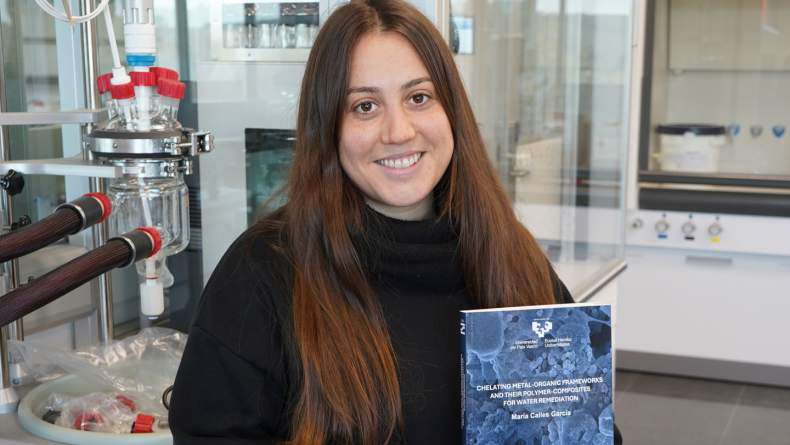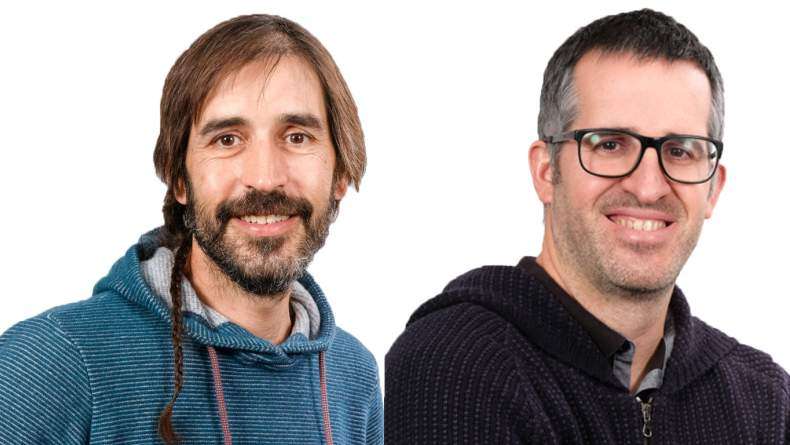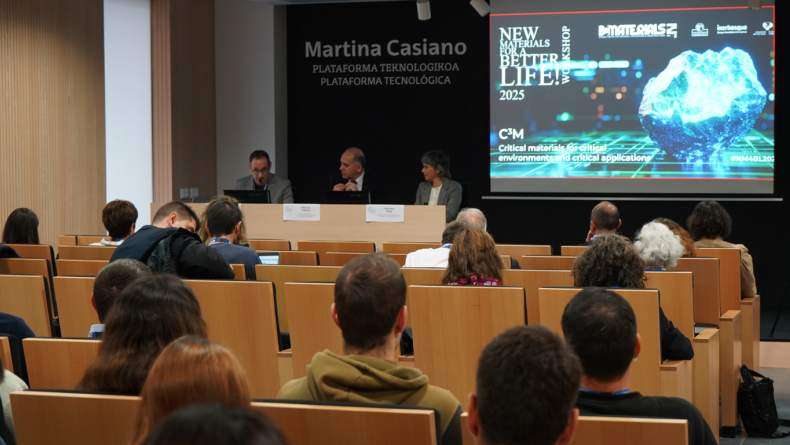BCMaterials Fortnightly Seminars #35

ADRIANA HUÍZAR
(UPV/EHU)
MAGNETIC ANISOTROPY IN ASSEMBLIES OF MAGNETITE NANOPARTICLES EXTRACTED FROM MAGNETOTACTIC BACTERIA MAGNETOSPIRILLUM GRYPHISWALDENS
Self-assembly is the autonomous organization of components into patterns and structures due to balance between electrostatic forces, surface tension, entropy, substrate affinity and size, shape and concentration of the particles.1 In addition, the self-assembly process in magnetic materials is also related with intrinsic exchange coupling energy, anisotropy energy and dipolar interactions. The magnetic interaction becomes then an important issue, dominating the collective magnetic behavior. In this work, we carried out a magnetic study on assemblies of magnetite nanoparticles biomineralized by magnetotactic bacteria Magnetospirillum gryphiswaldense2, called magnetosomes. These magnetosomes are magnetite nanoparticles surrounded by a lipid bilayer with a thickness ≈ 2 - 4 nm, present truncated-cuboctahedral shape and a mean diameter of ≈ 36 nm. The magnetosomes were deposited by drop coating technique under an applied magnetic field ≈ 0.4 T, onto silicon substrate for magnetic measurements, and on top of a grid covered by amorphous carbon for Transmission Electron Microscopy image (figure 1a) and Off-axis Electron Holography to map the magnetic field of the nanoparticle assemblies (figure 1b). The magnetosomes are arranged in wide bands forming large strings in the direction of the applied magnetic field and covering a big area of the substrate. The hysteresis loops of the linear patterns were measured by Magneto-optical Kerr Effect (MOKE) magnetometer at different angles with respect to the applied magnetic field direction (figure 1c). Magnetization rotation of particles under the external magnetic field oriented at different angles matches well with the simulations. The evolution of the coercive field and remanence verified the presence of well-defined patterns.
1Varón, L. Peña, L. Balcells, V. Skumryev, B. Martinez, V. Puntes, Langmuir, 2010, 26, 109-116. 2L. Fdez-Gubieda, A. Muela, J. Alonso, A. Garcia-Prieto, L. Olivi, R. Fernandez-Pacheco, J. M. Barandiarán, ACS Nano, 2013, 7, 3297-3305.


 Figure 1. a) Image of TEM of assembled magnetosomes under a magnetic field onto carbon surface
b) magnetic induced map of assembled magnetosomes
c) polar plot of angular dependence of the coercivity, Hc, simulation is represented as blue lines.
Figure 1. a) Image of TEM of assembled magnetosomes under a magnetic field onto carbon surface
b) magnetic induced map of assembled magnetosomes
c) polar plot of angular dependence of the coercivity, Hc, simulation is represented as blue lines.
XABIER LASHERAS
(BCMaterials)
UNDERSTANDING THE IMPACT OF MAGNETIC NPS AND NANOCAPSULES UPON A SIMPLIFIED IN VITRO MODEL OF THE HUMAN BLOOD VESSEL
One of the most important research areas nowadays is focused on developing and testing different kind of nanomaterials, as magnetic, gold and polymeric nanoparticles, to be applied as therapeutic mediators to treat different kind of cancer. In the specific case of magnetic nanoparticles, the main objective is to develop a mechanism to treat the cancer by the magnetic hyperthermia effect of these nanoparticles. In this way, a lot of previous work has been performed to obtain magnetic nanoparticles with high saturation magnetization and magnetic anisotropy, in order to achieve an optimum response in magnetic hyperthermia treatments. However, to consider the obtained nanomaterials suitable candidates for biomedical applications, some tests have to be previously performed. In order to check the possibility to use some nickel ferrite based nanomaterials in humans, the effects of some magnetic nanomaterials in a simplified in vitro model of the human blood vessel have been tested. This model is based on a endothelial cell-macrophage co-culture, which simulates the structure and the contact of real human blood vessel with the blood. The aim of this project is to check the effects that the intravenous injections of nanoparticles could produce in the blood vessels. This work has been carried out based on the method and model developed in the Adolphe Merkle institute (Fribourg, Switzerland) under the supervision of Dr. Martin J. D. Clift, Dr. Alke Fink and Dr. Barbara Rothen-Rutishauser.Related news
María Calles, New Doctor of BCMaterials
We would like to congratulate María Calles García for obtaining her PhDs in Materials Science and Technology from the UPV/EHU. On December 4 made a brilliant defense of her thesis titled ‘Chelating…Invited Talk with Barcelona Microelectronics Institute’s researchers (December 3)
On December 3 at 12:00 PM, in the Martina Casiano Auditorium in Leioa, BCMaterials will host senior researchers Antón Guimerà and Xavier Illa from the Barcelona Microelectronics Institute (IMB-CNM,…Invited Talk by Liu Yao on Lithium-Metal Batteries (December 2)
Next Monday, December 2, Liu Yao, professor at the Shanghai Institute of Applied Physics, will give an invited lecture at BCMaterials entitled ‘Li-Metal Batteries: From Liquid to Solid-State’. The…Success of BCMaterials’ Annual Workshop on Critical Materials
The 2025 edition of BCMaterials’ annual workshop gathered nearly one hundred participants on November 19 in Leioa to review the latest advances and discuss critical materials, their applications, and…



